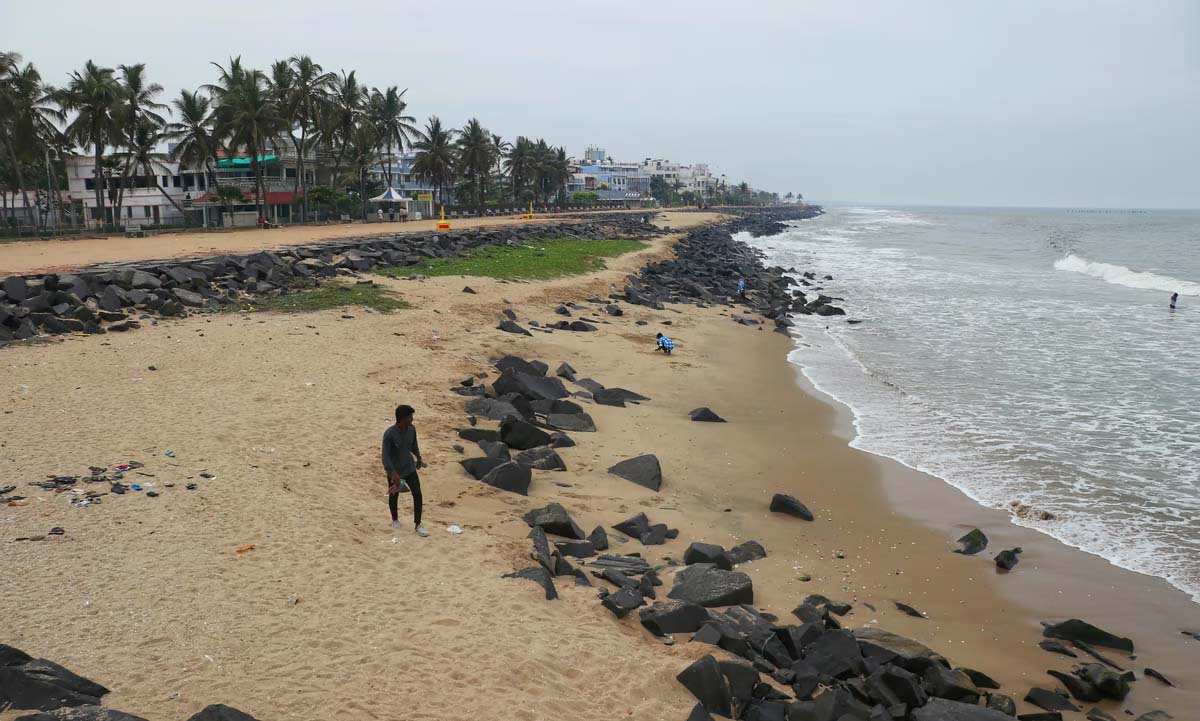PUDUCHERRY: The long sandy beachfront in Puducherry with the 1.5 km stretch, created as part of India’s first experimental Beach Restoration Project (BRP), is facing sustainability issues as erosion continues to reduce its size substantially. In some areas, particularly around the Gandhi statue, the beach has been entirely submerged, with waves now reaching the rocks dumped for coastal protection.
The beach, which has been a popular attraction for both tourists and locals, was created through the sinking of a wedge-shaped artificial reef near the chief secretariat to retain sand on the northern end by the Ministry of Earth Sciences. This project, which had an outlay of `25 crore, and with artificial sand nourishment by dredging the harbour by the port department, resulted in the formation of the sandy beach in 2019. Despite the success of this initiative, plans to construct a similar reef on the southern side to sustain the beach have not materialised due to lack of funds.
The port development project and the beach’s sustenance were intended to proceed concurrently. Under the Sagarmala Project, for development of the port and to revive cargo movement, capital dredging was completed in December 2022, resulting in the discharge of 7.3 lakh cubic metres of sand on the northern side of the pier. The natural south-east drift moves sand northward for eight months, while the north-east drift moves it southward for four months, presenting a challenge for maintaining the sandy beach.
According to MV Ramana Murthy, mission director for the Deep Ocean Mission and director at the National Centre for Coastal Research of the Indian Ministry of Earth Sciences, the construction of the southern reef and continued beach nourishment are essential for sustaining the beach.
The dredging of the port is to begin with the task of maintenance dredging being awarded to IIT Chennai. This will involve moving one lakh cubic metres of sand using a drag flow pump and discharging on the coast near the Lighthouse.
